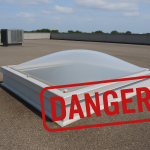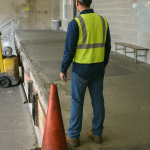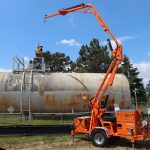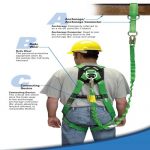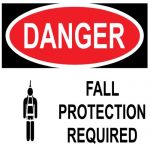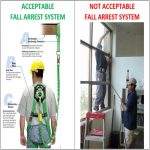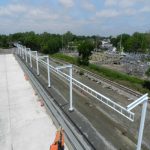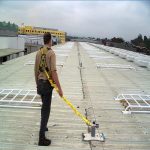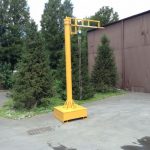The Most Overlooked Fall Hazards in Industrial Facilities
The Most Overlooked Fall Hazards in Industrial Facilities
Don’t let what you don’t see become your next safety incident.
When people think of fall hazards, they often picture ladders, rooftops, or scaffolding. But in our experience at FallProof Systems, the most dangerous hazards are usually the ones that blend into the background.
Below are five of the most overlooked fall risks we encounter in industrial facilities — and why they matter.
Think roof hatches, skylights, floor cutouts, or mezzanine drop zones. These areas are often left uncovered or unguarded “just for a minute,” but that minute can change everything. Skylights in particular are notorious for being mistaken as solid surfaces — until someone falls through.
- Machinery Maintenance Areas
Industrial equipment like silos, tanks, and conveyor systems require routine inspection and servicing — often from the top. Without anchor points, portable rails, or engineered lifelines, these become some of the most dangerous areas in a facility.
- Catwalks and Elevated Platforms
Partial or gapped guardrails are a silent threat. Whether due to outdated design or equipment access needs, these “mostly protected” areas invite risk. One missed step or unguarded edge is all it takes.
- Temporary Access Structures
Mobile stairs, rented scaffolds, or short-term work platforms may not meet the same safety standards as permanent structures. But OSHA doesn’t care how long something is there — if there’s a risk, protection is required.
- Loading Docks and Truck Bays
Loading docks are usually just under 4 feet high — but don’t let that fool you. Dozens of injuries occur each year from falls at these edge zones. Workers guiding materials, distracted by forklifts, or navigating poor lighting are particularly vulnerable.
Why These Hazards Get Missed
They don’t look like traditional fall risks. They’re often in spaces no one assumes are hazardous — until someone gets hurt. These “in-between zones” are where safety plans fall short.
FallProof Sees What Others Miss
At FallProof Systems, we take a comprehensive approach to every walkthrough, identifying hidden hazards and designing solutions tailored to your space — from custom guardrails and overhead anchor tracks to mobile anchor units like The Grabber.
✅ Ready to Uncover the Hidden Risks?
Let us help you turn blind spots into protected zones.
📅 Schedule a Safety Assessment Today »
📞 Or call us at (609)-325-5555

